7
Features and Characteristics of Baby Carriers
Features of Baby Carriers
Features play an important role, with regards to safety, comfort and ease of use, when
selecting a new baby carrier for your bundle of joy. Before buying baby carriers, have a
look at some of their important features, including the following.
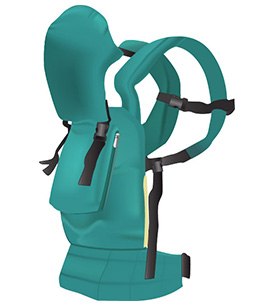 1
2
3
4
5
6
7
8
9
10
1
2
3
4
5
6
7
8
9
10
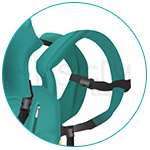
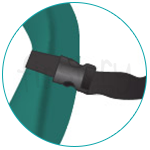

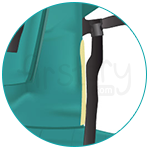
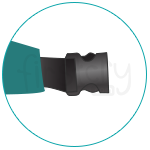
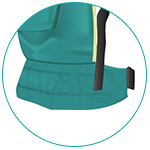
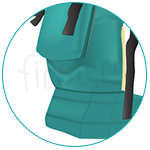
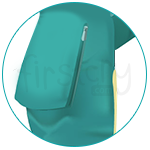
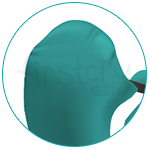
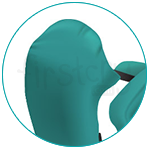
Baby carriers are made using different fabrics like natural, synthetic, etc. The most common fabrics include cotton and polyester. Some baby carriers are made with organic fabric. The fabric used determines the sturdiness and strength of the baby carrier. Being a natural material, cotton is cool, soft yet quite strong. The fabric used also determines breathability of the baby carrier. While buying a baby carrier, look for a fabric that is easy to clean, and has fire resistance. Also, look for one with anti-allergenic properties.
Newborn babies can’t support their heads. At such an early age, their necks are so delicate that they do not have head and neck control. So if you intend to carry your baby, it is crucial to have a baby carrier with head support.
In some carriers, the interior is filled with padding to support your baby’s head, back and legs. Good news is, many of the available baby carriers today are designed with inbuilt lumbar support for your baby, so you can choose one easily.
The shoulder straps of a baby carrier should be sturdy enough to bear the weight of the baby. Shoulder straps have firm padding on it for greater comfort for the wearer.
A sternum strap connects the shoulder straps and prevents them from slipping off the shoulders. This strap is adjustable, and helps to reduce the pressure on the shoulders.
A robust baby carrier comes with waist straps which distribute your baby’s weight across your lumbar i.e. shoulders, back, torso, hips and pelvis. Interlocking padded waist belts can be adjusted to fit your waist.
Baby carriers differ, depending on their type and brand. Always look for one with complexly designed clasps and buckles that are difficult to undo. This is necessary for your baby’s safety. Go for adjustable fasteners if you wish to use the baby carrier for a longer period, as your baby grows.
The easy adjustable sleeping hood snaps on, or clips to the shoulder straps, and can be neatly tucked away in a zippered pocket in the front of the baby carrier. It helps keep your child out of the sun, especially when your child is just about to sleep.
Baby carriers can become hot at times, making your baby uncomfortable while you carry them. Side vents keep your baby cool and comfortable.
Most baby carriers are machine washable. As a busy parent of a new-born, you need a baby carrier that is convenient and easily washable. However, some baby carriers can only be washed by hands or can only be dry-cleaned.
 1
2
3
4
5
6
7
8
9
10
1
2
3
4
5
6
7
8
9
10
Features of Baby Carriers

1
The shoulder straps of a baby carrier should be sturdy enough to bear the weight of the baby. Shoulder straps have firm padding on it for greater comfort for the wearer.
Padded Strap

2
A sternum strap connects the shoulder straps and prevents them from slipping off the shoulders. This strap is adjustable, and helps to reduce the pressure on the shoulders.
Sternum Strap

3
Baby carriers are made using different fabrics like natural, synthetic, etc. The most common fabrics include cotton and polyester. Some baby carriers are made with organic fabric. The fabric used determines the sturdiness and strength of the baby carrier. Being a natural material, cotton is cool, soft yet quite strong. The fabric used also determines breathability of the baby carrier. While buying a baby carrier, look for a fabric that is easy to clean, and has fire resistance. Also, look for one with anti-allergenic properties.
Fabric

4
Baby carriers can become hot at times, making your baby uncomfortable while you carry them. Side vents keep your baby cool and comfortable.
Vent

5
Baby carriers differ, depending on their type and brand. Always look for one with complexly designed clasps and buckles that are difficult to undo. This is necessary for your baby’s safety. Go for adjustable fasteners if you wish to use the baby carrier for a longer period, as your baby grows.
Fastner

6
A robust baby carrier comes with waist straps which distribute your baby’s weight across your lumbar i.e. shoulders, back, torso, hips and pelvis. Interlocking padded waist belts can be adjusted to fit your waist.
Waist Belt

7
Most baby carriers are machine washable. As a busy parent of a new-born, you need a baby carrier that is convenient and easily washable. However, some baby carriers can only be washed by hands or can only be dry-cleaned.
Easy To Clean

8
In some carriers, the interior is filled with padding to support your baby’s head, back and legs. Good news is, many of the available baby carriers today are designed with in-built lumbar support for your baby, so you can choose one easily.
Body Support

9
Newborn babies can’t support their heads. At such an early age, their necks are so delicate that they do not have head and neck control. So if you intend to carry your baby, it is crucial to have a baby carrier with head support.
Head Support

10
The easy adjustable sleeping hood snaps on, or clips to the shoulder straps, and can be neatly tucked away in a zippered pocket in the front of the baby carrier. It helps keep your child out of the sun, especially when your child is just about to sleep.
Attachable Hood
Fabric
Baby carriers are made using different fabrics like natural, synthetic, etc. The most common fabrics include cotton and polyester. Some baby carriers are made with organic fabric. The fabric used determines the sturdiness and strength of the baby carrier. Being a natural material, cotton is cool, soft yet quite strong. The fabric used also determines breathability of the baby carrier. While buying a baby carrier, look for a fabric that is easy to clean, and has fire resistance. Also, look for one with anti-allergenic properties.
Head Support
Newborn babies can’t support their heads. At such an early age, their necks are so delicate that they do not have head and neck control. So if you intend to carry your baby, it is crucial to have a baby carrier with head support.
Body Support
In some carriers, the interior is filled with padding to support your baby’s head, back and legs. Good news is, many of the available baby carriers today are designed with inbuilt lumbar support for your baby, so you can choose one easily.
Padded Straps
The shoulder straps of a baby carrier should be sturdy enough to bear the weight of the baby. Shoulder straps have firm padding on it for greater comfort for the wearer.
Sternum Strap
A sternum strap connects the shoulder straps and prevents them from slipping off the shoulders. This strap is adjustable, and helps to reduce the pressure on the shoulders.
Waist belt
A robust baby carrier comes with waist straps which distribute your baby’s weight across your lumbar i.e. shoulders, back, torso, hips and pelvis. Interlocking padded waist belts can be adjusted to fit your waist.
Fastener
Baby carriers differ, depending on their type and brand. Always look for one with complexly designed clasps and buckles that are difficult to undo. This is necessary for your baby’s safety. Go for adjustable fasteners if you wish to use the baby carrier for a longer period, as your baby grows.
Attachable Hood
The easy adjustable sleeping hood snaps on, or clips to the shoulder straps, and can be neatly tucked away in a zippered pocket in the front of the baby carrier. It helps keep your child out of the sun, especially when your child is just about to sleep.
Vent
Baby carriers can become hot at times, making your baby uncomfortable while you carry them. Side vents keep your baby cool and comfortable.
Easy to clean
Most baby carriers are machine washable. As a busy parent of a new-born, you need a baby carrier that is convenient and easily washable. However, some baby carriers can only be washed by hands or can only be dry-cleaned.
Characteristics of Baby Carriers
-
Leg Holes
Very small babies could slip through a baby carrier, causing serious injury or even
death in some cases. Small leg holes and a snug fit would ensure the child’s safety
and keep the child close to your body. In certain baby carriers, like wraps, the baby’s legs
are secured within the carrier itself. The baby’s legs are often folded in a froggy-leg
position, with bottom down and knees up.
-
Ready to Use
Baby carriers are ready to use or need minimum installation as compared to prams or
strollers. Also, baby carriers come with minimal accessories. Minor adjustments are
needed to accommodate more weight.
-
Reversibility
Some baby carriers are reversible, and provide moms the option of choosing the side
that matches better with the rest of their outfit. Both sides come with different
patterns, thus providing the variety that comes with having more than one carrier.
-
Eco-friendly Fabric
Most tiny tots chew at the carrier while teething. Moreover, some friction between
areas of skin and the carrier are unavoidable. The fabric should therefore be soft,
and preferably organic. Its breathability would ensure comfort for both parent and
child.
-
Durable Cross-stitching
Baby carriers with reinforced cross-stitching used in all areas ensure to hold up the
most weight of the baby.
-
Carry Position Options
A high-end baby carrier would offer different carry positions. The common carry
positions are front carry, hip carry and piggyback. Choose a baby carrier depending
upon your most comfortable baby carrying position.
-
Inserts
Insert is an accessory that provides the baby with a structurally firm and sturdy
position, irrespective of the type of baby carrier that is being used. Inserts are safe to
use for children right from birth and protects your little one’s delicate spine. You can
move around care-free, without worrying about your baby being in an improper
position inside the carrier. They are best used for very small babies. As your child grows older,
a removable pillow can be used as an insert to provide a cushioned seat.
-
Foot Stirrups
Foot stirrups are for taller children. These foot stirrups simply attach to the sides of
your baby carrier and support longer legs. They are fully adjustable and compatible
with all child carriers.
-
Lightweight Frames
Some baby carriers come with tubular aluminum frames which provide extra
stability and support to the carrier. Such frames help keep the baby safe and
comfortable during long hours of use, and are particularly useful if you are going to
be treading uneven surfaces with your baby behind your back.
-
Accessibility
When buying a baby carrier, check to see if it easily lets you access your baby. The
baby carrier should be designed to allow you to get your baby in and out of it, easily.
-
High Quality, Shock-Resistant Foam
Resilient, high-quality foam makes the shoulder straps soft, yet durable. The high-density,
shock-resistant foam is commonly used in sports and medical devices. It
ergonomically forms to your body shape, and will never deform or lose shape.
